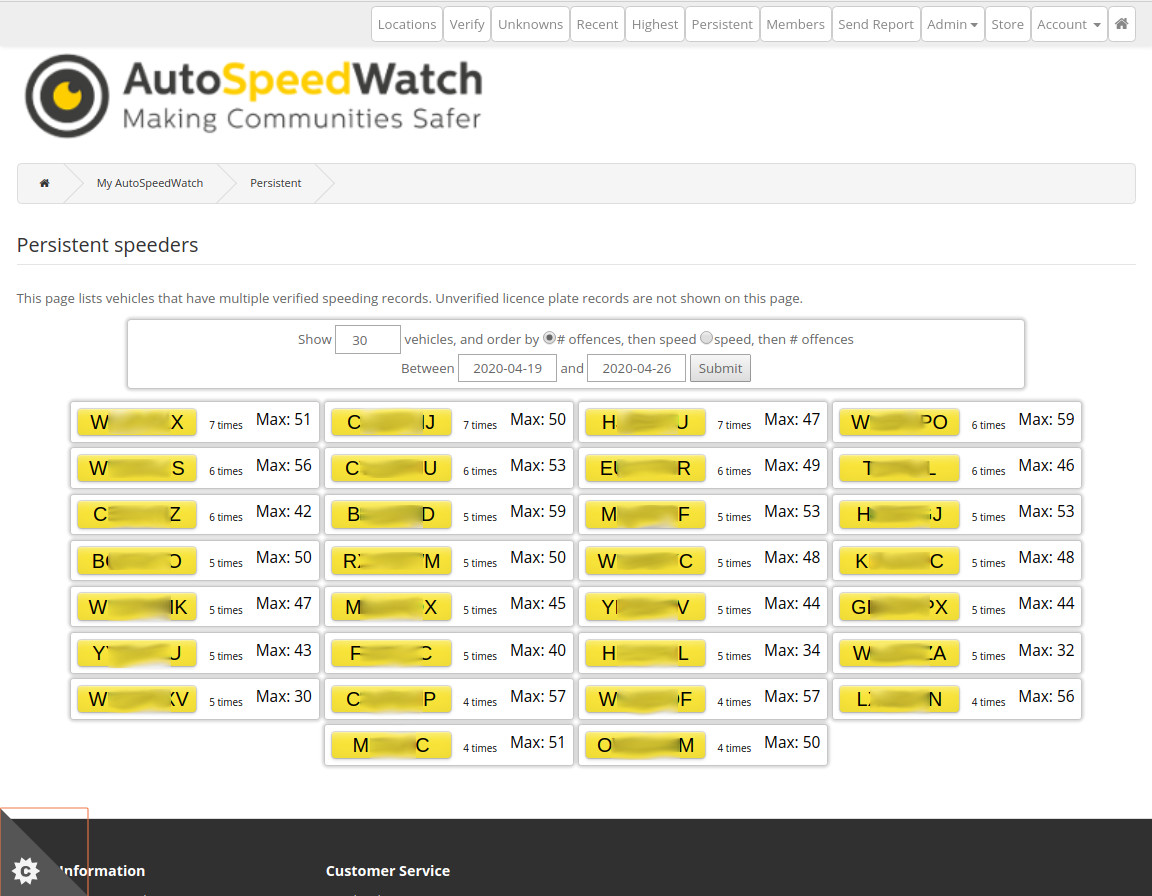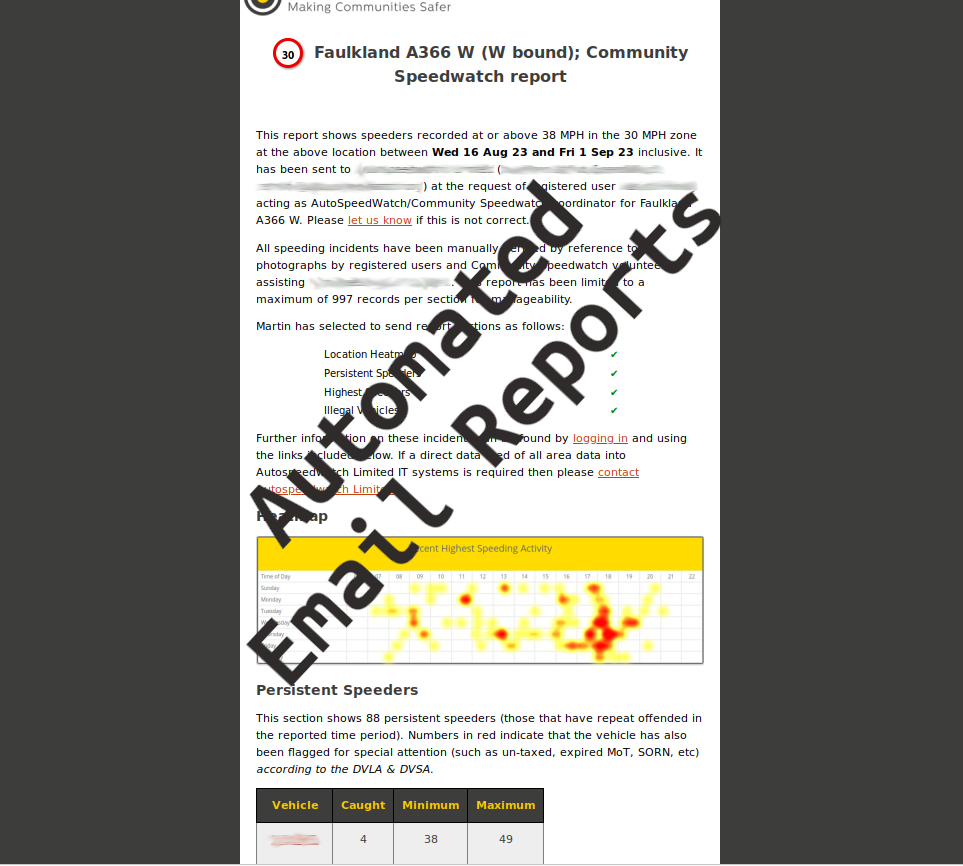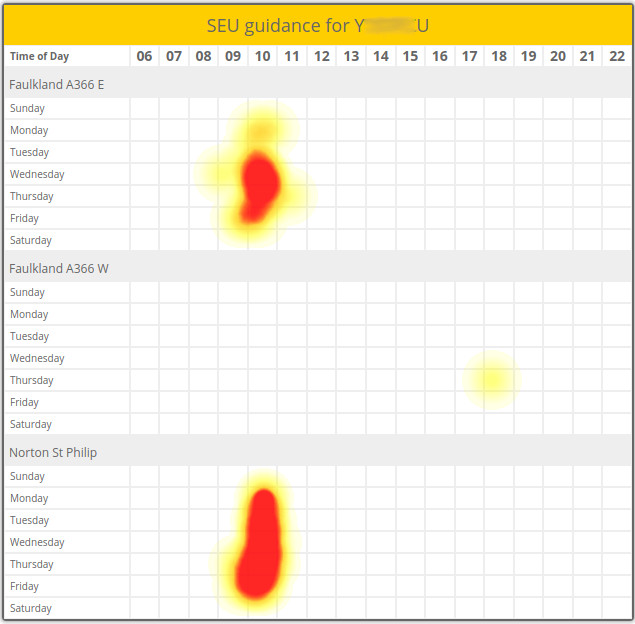Typical Results
100,000 offences > just 238 key culprits!
In the first year of operation, AutoSpeedWatch captured nearly 100,000 offences, of which ~7,500 were from 'persistent' speeders that had been caught 20 times or more. Those 7,500 offences were generated by just 238 vehicles! Rather than flood police with 1000s of records, AutoSpeedWatch empowers efficient policing, by showing exactly which vehicles cause the worst road safety threats.
Persistents become obvious. Untaxed/Un-MoT'd vehicles highlighted

Once verified, the highest and most persistent speeders 'bubble to the top'... and over a few days those with repeated poor driving behaviour become clearly evident.
For example, as part of a spring 2019 test requested by Avon and Somerset Police, a Roadside Unit was installed in a 30mph zone outside a First School in a small Somerset village known for speeding issues. The unit was tested for less than a week but rapidly identified:
- 16 habitually speeding vehicles (3 or more times in the week)
- Nearly 800 speeding incidents over 38 mph in the 30 mph zone
- A few vehicles travelling over 70mph, 6 above 60mph, and 81 above 50mph
The system even highlighted those vehicles (about 4% of speeders) that were untaxed or un-MoT'd.
Reports Automatically Generated
 No need to return to the units to retrieve data; instead the reports can be sent at a touch of a button! In the primary school example above, and after just 1 week from a single unit, the automatic report sent identified the 16 key vehicles causing significant safety risks.
No need to return to the units to retrieve data; instead the reports can be sent at a touch of a button! In the primary school example above, and after just 1 week from a single unit, the automatic report sent identified the 16 key vehicles causing significant safety risks.
Such reporting enables the police to rapidly and effectively target their resources in the most efficient manner, whether by visiting the registered keeper, writing a warning letter, or deploying the Speed Enforcement Unit.
Reported offences can also be 'throttled back' to limit the number of vehicles that are reported to the police, focusing just on those causing the greatest safety risks.
Heatmaps show when and where police should enforce
 Heatmaps for both persistent speeders and for locations graphically guide Speed Enforcement Units on when and where to deploy to best effect. This makes their enforcement process more effective and efficient, reducing their workload, whilst making the biggest impact on road safety. The community guides and assists the police rather than fighting against them.
Heatmaps for both persistent speeders and for locations graphically guide Speed Enforcement Units on when and where to deploy to best effect. This makes their enforcement process more effective and efficient, reducing their workload, whilst making the biggest impact on road safety. The community guides and assists the police rather than fighting against them.
When combined with all the information from the neighbouring Roadside Units in other communities, the police get a virtually live indication of where their speeding management priorities lie. The system identifies those creating the greatest and most persistent risks to others, rather than penalising good drivers making a mistake.
AutoSpeedWatch - an effective tool to make communities safer.

